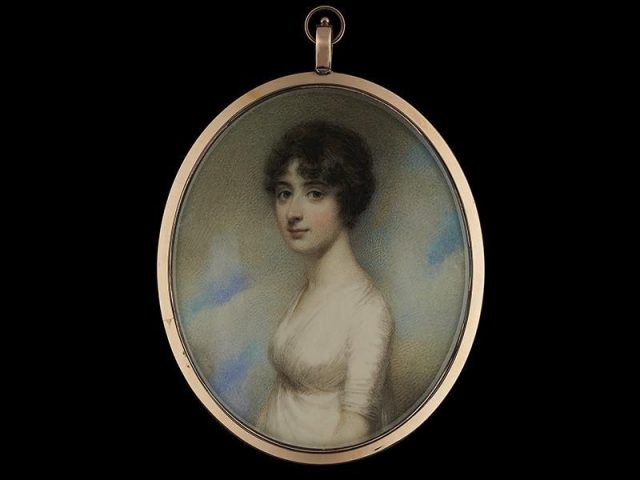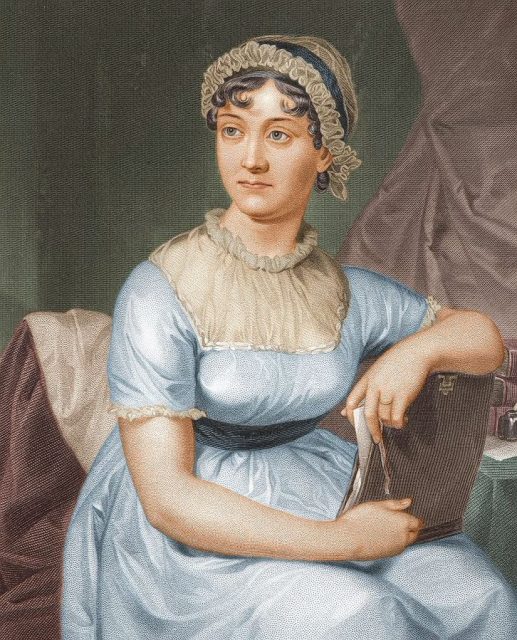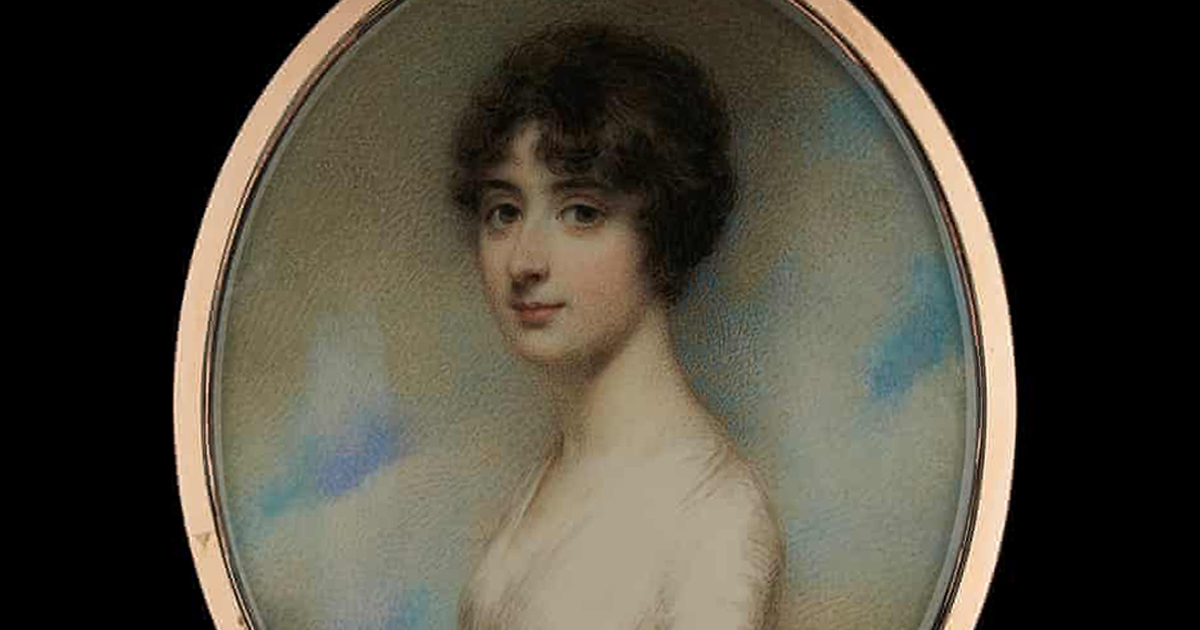Is this the portrait that inspired Lydia Bennet from beloved Jane Austen novel Pride and Prejudice? The influential author has been dead for over 2 centuries. As with any franchise however, it doesn’t stop fans and their theories. The museum Jane Austen’s House, based in Chawton Hampshire, has purchased a miniature portrait of Mary Pearson. It’s believed Mary became Lydia in the author’s most famous work, but how?
Henry Austen – Jane’s “favourite brother” according to The Guardian – got engaged to Mary in 1796. From the outside it may have appeared a decent match. Her father was Sir Richard Pearson of the Royal Navy, who’d commanded HMS Serapis during the American Revolution (1765 – 83). Henry was in the militia, so it made sense she would gravitate toward this man of duty.
Marriage in those days was a more serious affair, tied up in reputation and status as much (and often more so) than true love. Pride and Prejudice’s famous opening line declares: “It is a truth universally acknowledged, that a single man in possession of a good fortune, must be in want of a wife.”

By 1798 however, the relationship had crumbled. Henry took up with widow Eliza Hancock and Mary found herself on the scrapheap. It would be a couple of decades before she found a partner again. Quoted by The Guardian, collections and interpretations manager Sophie Reynolds says, “It is quite easy for our society to see that obsession about marriage as a kind of problem but back then it was, 100%, what you had to do.”
Devastating though this experience must have been, Mary had to get back on the courtship horse – hence the portrait, experts speculate. Dating from the year she was dumped and painted on ivory using watercolor, the oval image measures just 3.5” in height. It shows Mary with her hair “curled and upswept” (says the museum website) and wearing a dress made of white muslin.

The portrait contains the subject’s actual hair in the back. “Locks of the sitter’s dark brown hair were braided into a design on the object’s reverse—a practice common in Victorian jewelry-making and art-making” notes Smithsonian Magazine, referring to writings by Allison Meier in Artsy. The little gold-framed advert may have “marked her reentry into society following the failed engagement” it continues, reporting on word from Jane Austen’s House. The museum is based in a 17th century cottage occupied by Austen during her final years.
Austen certainly met Pearson. Buzz around the engagement was said to be happening as the former wrote Pride and Prejudice. The wayward Lydia is described by Sparknotes as “preoccupied with gossip, socializing, and men.” The site adds “She is attractive and charismatic, but she is also reckless and impulsive” Lydia’s elopement with Mr Wickham is one of the best-remembered sections of the book.
Becoming Jane Austen by Jon Hunter Spence (2003) claims Mary’s assorted love notes to Henry were returned care of Jane. The pair even corresponded post split, yet Austen wasn’t exactly impressed by her brother’s choice to begin with. Not for nothing was the working title for her masterpiece ‘First Impressions’.
“I will not pretend to say that on first view she quite answered the opinion I had formed of her” Miss Austen wrote to her sister Cassandra. “My Mother I am sure will be disappointed.” Pouring further oil on the fire, she says, “From what I remember of her picture, it is of no great resemblance”.
Related Article: Jane Austen Brewed her own Specialty Beer
Pride & Prejudice has been adapted numerous times – Jena Malone played Lydia in the 2005 movie. The role is probably best associated with Julia Sawalha and the classic BBC series from 1995.
The portrait was supplied by art dealer Philip Mould, with Beecroft Bequest/the Art Fund financing the sale. Visitors hoping to see Mary Pearson for themselves will be disappointed – Jane Austen’s House is on lockdown for the time being.
